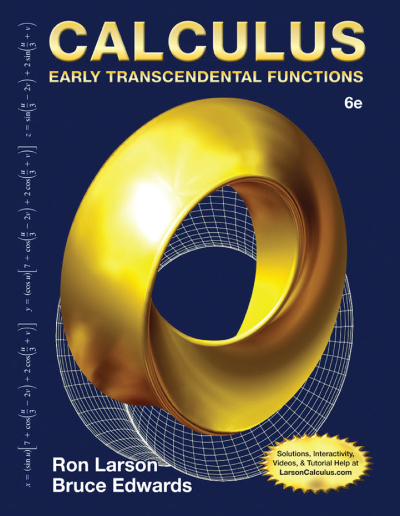Gottfried Wilhelm Leibniz
(1646 – 1716)
Gottfried Wilhelm Leibniz was a man of astounding ability whose significant contributions to virtually every discipline—from history, law, theology, politics, philosophy, philology, metaphysics, and diplomacy to science, mathematics, and logic—have led many to term him the Aristotle of his age. Like Aristotle, Leibniz was a paragon of thought and intellect who was apparently able to absorb all that was known of the universe in his time.
Leibniz firmly believed there was something to be learned from every book; he therefore read voraciously, without discrimination. He regarded each person he met, whatever his station, as a vitally important source of information.
Leibniz’s insatiable curiosity, coupled with his extraordinary intelligence (his I.Q. has been estimated to have been at least 180, and probably much higher), led him to explore and master every branch of learning he encountered. His achievements are all the more remarkable when one considers that Leibniz was largely self-taught.
Leibniz, the son of a professor of moral philosophy, was born on July, 1, 1646 in Leipzig. Leibniz’s father Friedrich died in 1652, when Leibniz was just six years old. From that point on, Leibniz seems to have been the primary director of his own education. He began by reading every book printed in German in his father’s excellent library. He then taught himself at eight years of age to read Latin, and at ten, Greek. By the time he was fourteen years old, Leibniz was thoroughly familiar with history and the classical literature his father so admired.
At fifteen, Leibniz entered the University of Leipzig as a student of law. He earned his bachelor’s degree two years later. By the age of twenty he had fulfilled the requirements for his doctorate; however, because of his youth or perhaps the jealousy of his professors, he was denied the degree. Leibniz left Leipzig in disgust, never to return. He enrolled at the University of Altdorf in Nuremburg, which not only awarded him the coveted degree, but offered him a professorship as well.
Leibniz refused the professorship and chose, as had three generations of his family before him, to enter the service of the dukes of Hanover. Leibniz was officially the administrator of the ducal library, a position he held for forty years under four successive masters, but was often asked by the family of Hanover to act as their diplomat and political strategist.
In 1673 Leibniz, in Paris on a diplomatic mission, encountered Christiaan Huygens, who would become his lifelong friend. The Dutch physicist introduced Leibniz to the study of mathematics, at which Leibniz proved remarkably adept. Before long, he had invented a calculating machine that improved on one earlier devised by the French mathematician Blaise Pascal. Leibniz’s machine, besides having the capacity to add and subtract, could multiply, divide, and extract roots. By 1674, Leibniz had also constructed the foundations of his crowning mathematical achievement: the invention of the calculus and a system of notation with which to express it. A report of his calculus differentialis was published in 1684 in the cientific periodical Acta Eruditorum, of which Leibniz was editor.
Isaac Newton, who some years before had arrived independently at the calculus but had elected not to publish his discovery, made no reply to Leibniz until 1705. The year before, Leibniz had published a review disputing the conclusions drawn by Newton in his article on optics. Newton, always very sensitive to criticism, used the second edition of his widely disseminated Principia to accuse Leibniz of plagiarizing the calculus.
In 1712, England’s Royal Society, of which Newton was president, appointed a committee to investigate both men’s claims of priority in discovering the calculus. The committee’s report, the Commercium epistolicum, unequivocably supported Newton, though this scarcely constitutes objective evidence since Newton himself was the document’s primary author.
Though the passage of time has obscured the facts of the matter, the consensus of most historians is as follows: the differential and integral calculus, in its present form, was invented by Leibniz between 1675 and 1685; Newton devised the infinitesimal calculus and his method of fluxions around 1665 but chose to wait until much later to publish his discoveries. Great intellects, drawing from similar sources, are likely to arrive at similar conclusions. It is difficult to understand why these two learned men were unable to accept gracefully the concurrency of their discoveries. Unfortunately, they allowed themselves to become embroiled in a bitter quarrel that diverted their attention from more profitable pursuits.
It is interesting to note that the repercussions of the controversy, sometimes called “the Great Sulk,” proved disastrous for British mathematics and science. The British considered it their patriotic duty to spurn Leibniz’s analytical methods and system of notation in favor of Newton’s, though Leibniz’s approach proved far more effective. In preferring Newton to the exclusion of Leibniz and other Continental mathematicians like Euler, Lagrange, Laplace, Gauss and the Bernoullis, the British removed themselves from the mainstream of scientific thought at one of the most fruitful periods in history, and doomed themselves to mathematical obscurity for several hundred years.
Leibniz himself fared no better. In 1714, Leibniz’s master, George Ludwig of Hanover, was crowned King George I of England. Leibniz longed to join him in London, but was ordered to remain in Hanover and complete the new king’s genealogy. Leibniz, who never married, spent the last years of his life in loneliness, and in pain from gout. When he died on November 14, 1716, at the age of seventy, only his secretary attended his funeral to mourn his passing. Nevertheless, Leibniz is today revered as the founder of modern European mathematics.
Links
http://www-history.mcs.st-andrews.ac.uk/Biographies/Leibniz.html
http://plato.stanford.edu/entries/leibniz/
References
- Asimov, Isaac. Asimov’s Biographical Encyclopedia of Science and Technology. Garden City, New York: Doubleday & Company, Inc., 1972.
- Ball, W.W. Rouse. A Short Account of the History of Mathematics. 1908. Reprint. New York: Dover Publications, Inc., 1960.
- Boyer, Carl B. A History of Mathematics. 2d ed., rev. Uta C. Merzbach. New York: John Wiley & Sons, Inc., 1991.
- Gillispie, Charles Coulston, ed. Dictionary of Scientific Biography. Vol. VIII. New York: Charles Scribner’s Sins, 1973.
- Hooper, Alfred. Makers of Mathematics. New York: Random House, Inc., 1948.
- Simmons, George F. Calculus Gems: Brief Lives and Memorable Mathematics. New York: McGraw-Hill, Inc., 1992.
- Struik, Dirk J. A Concise History of Mathematics. New York: Dover Publications, Inc., 1987.











